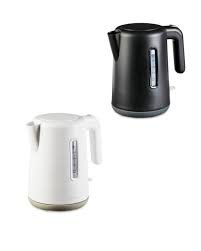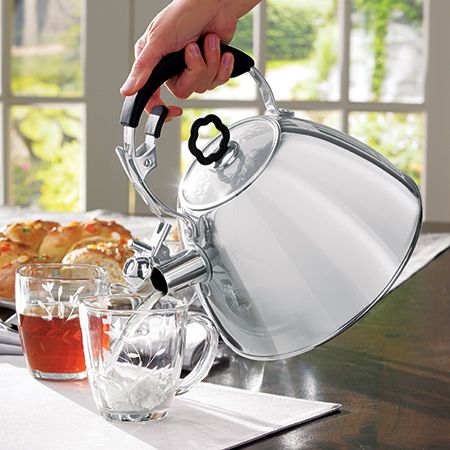Looking for a traditional Japanese tea kettle known as a “tetsubin”? These cast iron kettles are popular for their sleek design and ability to brew delicious tea.
Traditionally used in Japanese tea ceremonies, the tetsubin is known for its durability and heat retention. The cast iron material provides even heat distribution, perfect for brewing fragrant green teas. The kettles are also available in various designs and sizes, making them a stylish addition to any kitchen.
Whether you are a tea enthusiast or simply appreciate the art of Japanese craftsmanship, a tetsubin tea kettle is a functional and aesthetic choice for brewing your favorite tea.
The History Of Japanese Tea Kettles
Japanese tea culture has a rich history dating back to the 9th century when tea drinking was introduced to Japan from China. As a vital element of traditional Japanese teaware, the tea kettle, also known as ‘tetsubin,’ has been an integral part of the Japanese tea ceremony, symbolic of grace, simplicity, and ritual. Let’s delve into the captivating history of Japanese tea kettles and their evolution within Japanese culture.
Introduction To Traditional Japanese Teaware
In the world of Japanese tea ceremonies, traditional teaware holds profound significance. The craftsmanship and aesthetic appeal of these utensils are revered, with each piece embodying a sense of artistry and history. Among these revered items, the tea kettle plays a vital role, symbolizing the reverence for simplicity and minimalism in Japanese culture. The intricacy and elegance of these teapots are a testament to the artistry and precision of Japanese craftsmanship.
Evolution Of Tea Kettles In Japanese Culture
The evolution of Japanese tea kettles is a representation of the cultural and artistic development within Japan. From the utilitarian origins of the tetsubin to the elaborately designed and decorated kettles of the Edo period, each era has left its mark on the evolution of Japanese tea kettles. The gradual evolution reflects not only the changing preferences and tastes but also the cultural and historical context in which these objects were created.
Significance Of Traditional Teaware In Japanese Tea Rituals
Traditional Japanese teaware plays a pivotal role in the revered Japanese tea rituals, representing a harmonious blend of Zen philosophy, etiquette, and artistic expression. The tea kettle, as a central component of the tea ceremony, symbolizes purity, tradition, and harmony. Its usage within the ceremony emphasizes the importance of precision and mindfulness in the preparation and consumption of tea, creating a profound and contemplative experience for participants.
Materials And Techniques Used In Japan Tea Kettle Making
Japan has a rich tradition of tea culture, and the making of tea kettles is an art form in itself. Each tea kettle is crafted with precision using specific materials and techniques to enhance the brewing process and complement the ritual of tea preparation.
Usage Of Cast Iron, Copper, And Ceramics For Tea Kettle Construction
Japan tea kettles are crafted using various materials such as cast iron, copper, and ceramics. Each material has unique characteristics that influence the taste, aroma, and brewing process of the tea.
- Cast Iron: Cast iron tea kettles are known for their durability and heat retention properties. The material evenly distributes heat, allowing for a consistent brewing temperature, resulting in a rich and flavorful tea infusion.
- Copper: Copper tea kettles are valued for their excellent thermal conductivity, which facilitates quick and efficient heating. The material also imparts a unique metallic taste to the water, enhancing the overall tea drinking experience.
- Ceramics: Ceramic tea kettles are cherished for their non-reactive nature, which preserves the natural flavors and aromas of the tea. The material also provides insulation, keeping the water hot for an extended period, ideal for multiple tea servings.
Traditional Crafting Methods And Artisanal Techniques
The art of crafting Japan tea kettles involves traditional techniques passed down through generations, emphasizing precision and attention to detail.
- Hand-Forming: The hand-forming method involves shaping the kettle by hand, ensuring a seamless and ergonomic design that promotes efficient water heating and pouring.
- Enamel Coating: Enamel coating is applied to select tea kettles to enhance their heat resistance and prevent rust, safeguarding the longevity and functionality of the kettle.
- Decorative Embellishments: Artisans often incorporate decorative embellishments such as intricate patterns or symbolic motifs, adding aesthetic appeal while honoring the cultural significance of the tea ceremony.
Influence Of Materials And Techniques On The Tea Brewing Process
The choice of materials and the application of artisanal techniques significantly impact the tea brewing process, ultimately influencing the flavor, aroma, and overall sensory experience of the tea. Each material and crafting method contributes to the preservation of the tea’s natural qualities and the elevation of the traditional tea ceremony.
Design And Aesthetics Of Japanese Tea Kettles
When it comes to Japanese tea culture, the design and aesthetics of tea kettles play a significant role. The traditional Japanese tea kettle, known as the ‘tetsubin’, is not only a functional piece of teaware but also a work of art that embodies the rich cultural heritage of Japan. Let’s delve into the intricate patterns, symbolic motifs, and the deep-rooted cultural significance of Japanese tea kettle designs.
Intricate Patterns And Motifs In Traditional Tea Kettle Designs
Japanese tea kettles are known for their exquisite craftsmanship and intricate designs. These kettles often feature floral motifs, geometric patterns, or symbolic elements that hold profound cultural meanings. For instance, the cherry blossom motif symbolizes beauty and the transient nature of life, while the crane motif represents longevity and good fortune. The meticulous attention to detail in the decorative elements reflects the Japanese reverence for nature and the appreciation of subtle beauty.
Relationship Between Aesthetics And Functionality In Japanese Teaware
In Japanese teaware, the relationship between aesthetics and functionality is paramount. The design of the tea kettle not only enhances the visual appeal of the tea ceremony but also serves crucial functional purposes. The carefully crafted spout and handle ensure optimal pouring control, while the construction of the kettle facilitates efficient heat conduction, resulting in the perfect brewing of tea. This harmonious blend of form and function exemplifies the Japanese philosophy of ‘wabi-sabi’, embracing the imperfect and finding beauty in simplicity.
Cultural Significance Of Design Elements In Japanese Tea Kettles
Each design element in Japanese tea kettles holds profound cultural significance. From the choice of motifs to the materials used, every aspect reflects the deep-rooted traditions and values of Japanese tea culture. For instance, the use of cast iron in tetsubin symbolizes strength and durability, while the incorporation of auspicious symbols conveys wishes for good fortune and harmony. The meticulous craftsmanship and thoughtful inclusion of cultural elements in tea kettle designs make them not only functional vessels but also meaningful cultural artifacts.
The Role Of Tea Kettles In Japanese Tea Ceremonies
Japanese tea ceremonies are incomplete without the traditional tea kettle, known as “tetsubin. ” These kettles play a vital role in the preparation of tea, contributing to the ritual’s authenticity and significance. Crafted with precision and reverence, they symbolize the harmony between nature, tradition, and the art of tea making in Japanese culture.
Importance Of The Tea Kettle As A Centerpiece In Traditional Tea Ceremonies
In Japanese tea ceremonies, the tea kettle, or “tetsubin,” holds a position of great importance. It serves as the focal point of the ceremony, symbolizing the harmony between nature and human life. The time-honored tradition of heating water in a tea kettle and using it to brew high-quality tea contributes to the spiritual and meditative experience of the ceremony.
Impact Of Tea Kettle Design And Material On The Brewing Process
The design and material of the tea kettle play a crucial role in the brewing process. The cast iron tea kettles are favored for their superior heat retention and distribution, which ensures the water reaches the ideal temperature for brewing the perfect cup of tea. The traditional craftsmanship and aesthetic designs of these kettles also add an artistic element to the tea ceremony, enriching the overall experience.
Integration Of Tea Kettle Rituals In Japanese Hospitality And Culture
Tea kettle rituals are deeply integrated into the fabric of Japanese hospitality and culture. The act of preparing and serving tea from a traditional kettle is a demonstration of respect, tranquility, and mindfulness. Through these rituals, the Japanese people honor their guests and express their gratitude, showcasing the profound significance of tea and the role of the kettle in fostering meaningful connections.

Credit: www.amazon.com
Frequently Asked Questions On Japan Tea Kettle
How Do I Choose The Best Japan Tea Kettle?
To choose the best Japan tea kettle, consider the material, capacity, and heat retention. Look for durable options like cast iron or ceramic, with a comfortable handle and easy pour spout for convenience. Capacity should fit your needs, while good heat retention ensures your tea stays warm.
What Are The Benefits Of Using A Japan Tea Kettle?
Using a Japan tea kettle provides benefits like superior heat retention, durability, and a traditional aesthetic. It keeps tea warm for longer periods, allowing multiple servings. The durable materials ensure longevity, while the traditional designs add charm to your tea-making process.
Can I Use A Japan Tea Kettle On Different Heat Sources?
Yes, most Japan tea kettles are designed to be versatile and can be used on a variety of heat sources. Look for kettles suitable for gas, electric, or induction stovetops, ensuring you can enjoy your favorite teas no matter what kind of stove you have.
How To Properly Care For A Japan Tea Kettle?
To properly care for a Japan tea kettle, ensure it is thoroughly dried after each use to prevent rust. Regularly clean the interior and exterior with mild soap and water. Avoid using harsh abrasives that can damage the surface, and polish the kettle to maintain its shine.
Conclusion
A Japan tea kettle is a beautiful and functional addition to any kitchen. Its versatility and traditional craftsmanship make it a timeless piece. Investing in a Japan tea kettle not only enhances your tea-making experience but also adds a touch of elegance to your home.
Embrace the rich culture and history of Japan with this exquisite kitchen essential.



